#Giovanni Bonanno
Text


Invito
Pavilion Locust Valley
Generazione Marginali Attivi Ovunque - Active Marginal Generation Everywhere
Vengono presentati per questo evento collettivo 28 artisti selezionati di diversa nazionalità in 28 singole sale, ognuno con una personale di opere scelte.
La Galleria Sandro Bongiani Arte Contemporanea è lieta di inaugurare dal 15 al 24 novembre 2024 presso il Pavilion Locust Valley, in coincidenza con il tema “Stranieri Ovunque” e in contemporanea con la 60. Biennale Internazionale di Venezia 2024, l’evento internazionale “Generazione Marginali Attivi Ovunque - Active Marginal Generation Everywhere”, a cura di Sandro Bongiani con 28 artisti selezionati presenti in 28 singole sale, ognuno con significative opere scelte per questo evento a loro dedicato.
Dopo la mostra del progetto internazionale dal titolo “LiberaMente / Is Contemporary Art a Prison?” a cura di Sandro Bongiani, presentato ufficialmente il 2 ottobre 2023 presso la Galleria Sandro Bongiani Vrspace ecco un altro importante appuntamento sul tema dello straniero ovunque, ovvero,“Generazione Marginali Attivi Ovunque”, in cui viene segnalata la condizione di diverse generazioni di artisti marginali attivi che in modo originale e solitario hanno continuato a lavorare spesso nell’isolamento collettivo, alcuni anche per diversi decenni non curandosi minimamente del mercato e del sistema ufficiale dell’arte producendo nel tempo opere per certi versi non conformi ai dettami imposti dal mercato e proseguendo in un cosciente viaggio solitario e personale. Sono presenti a questo evento collettivo, ognuno con una propria personale artisti importanti come: Ray Johnson, Guglielmo Achille Cavellini, Shozo Shimamoto, Clemente Padin, Lamberto Pignotti, Giovanni Fontana, Paolo Scirpa, Marcello Diotallevi, Giuliano Mauri, Giulia Napoleone, Pietro Lista, Paolo Gubinelli, Giovanni Leto, Coco Gordon, Anna Boschi, John M. Bennett, Nicolò D’Alessandro, Enzo Patti, Serse Luigetti, Franco Panella, Ryosuke Cohen, Ernesto Terlizzi, Mauro Magni, Andrea Bonanno, Gabi Minedi, Raffaele Boemio, Ruggero Maggi e Reid Wood. Ecco una sorta di convinta rilettura delle proposte in atto presentati per l’occorrenza in un padiglione del tutto virtuale, con un’area immaginaria presso il Pavilion Locust Valley in cui sono stati coinvolti 28 artisti in altrettanti mostre retrospettive in un lucido e suggestivo percorso, ognuno con la propria specifica personalità e intensità creativa per una condivisione globale via web a 360 gradi in tutto il mondo a basso di emissioni CO2.
Pavilion Locust Valley
“Generazione Marginali Attivi Ovunque – Active Marginal Generation Everywhere”
28 mostre personali di Arte Contemporanea
a cura di Sandro Bongiani
da Lunedì 15 aprile 2024 a sabato 24 novembre 2024
Opening Lunedi 15 aprile 2024 ore 18:00
ORARI: tutti i giorni dalle 00.00 alle 24.00
E-MAIL INFO: [email protected]
TELEFONO PER INFORMAZIONI: +39 3937380225
Credits: Sandro Bongiani Arte Contemporanea
0 notes
Text
Al via a Jesolo i campionati italiani a squadre di calcio balilla paralimpico
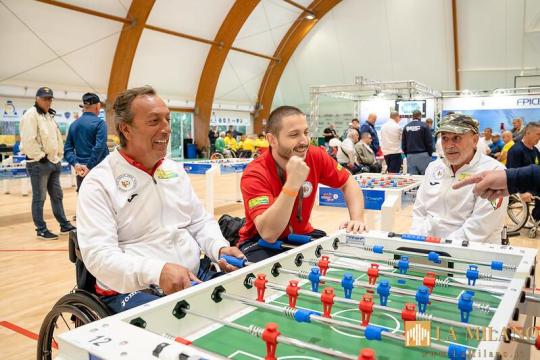
Al via a Jesolo i campionati italiani a squadre di calcio balilla paralimpico.
Intenso finale d'estate per la Federazione Paralimpica Italiana Calcio Balilla (FPICB) che, dopo le qualificazioni della World Series Lenohart in Germania (con tre ori) andate in scena dal 24 al 27 agosto, si prepara per altri quattro grandi appuntamenti che troveranno sede a Jesolo, in provincia di Venezia. Dal 13 al 17 settembre, infatti, sono in calendario quattro impegni, nazionali e internazionali, presso il palazzetto dello sport del Villaggio Marzotto (viale Oriente 44), sul litorale della città veneta.
Oltre alla FPICB, gli attori sono la International Table Soccer Federation e la Federazione Sport Sordi Italia, con il sostegno della Città di Jesolo, il patrocinio del Comitato Italiano Paralimpico e il supporto di SuperAbile Inail, Roberto Sport, FCA Autonomi, Inail, Errea, Offcarr, Handytech, Giai Vini e Iesolo.it.
Ad aprire le attività di questo intenso weekend di settembre sarà il raduno della Nazionale italiana di calcio balilla che da mercoledì 13 a venerdì 15 riunirà i migliori atleti italiani per un periodo di preparazione tecnica finalizzata alla partecipazione del torneo internazionale 3 Nations, quest'ultimo, organizzato dalla FPICB in collaborazione con la International Table Soccer Federation. Il torneo si disputerà sempre al Villaggio Marzotto, il 15 e 16 settembre, tra le squadre nazionali paralimpiche di Italia, Germania e Svizzera.
I convocati sono: Corrado Montecaggi, Vito Loris Bonaldo, Giacomo Paolo Rossi, Orlando Festa, Roberto Silvestro, Lorin Bagdasar, Luigi Iannone, Francesco Perin, Daniele Riga, Francesco Bonanno, Paolo De Florio e Francesco Valente guidati dal coach Giovanni Braconi, coadiuvato da Michele Nasti (assistente coach), Mirko Ferri (preparatore) e Luca Bruno Malaspina (Team Manager).
Al termine dell'evento internazionale, il 16 e il 17 settembre, sempre a Jesolo, si terrà la terza edizione del Campionato italiano a squadre (per la terza volta nel comune veneto) che vedrà contrapporsi alla caccia del titolo ben 26 compagini in rappresentanza di tutto lo stivale. Un torneo che si annuncia impegnativo, con tanti partecipanti che hanno inoltrato la propria domanda già da tempo, tanto che gli organizzatori hanno chiuso le iscrizioni per sold out all'inizio di agosto.
In contemporanea, e sempre al Villaggio Marzotto, la FPICB in collaborazione con la Federazione Sport Sordi Italia organizzerà la Coppa Italia di calcio balilla per non udenti.
Il Presidente FPICB Francesco Bonanno, di fronte a tanto impegno e sforzo organizzativo, non nasconde la propria soddisfazione: "Ci stiamo preparando a questi appuntamenti con grande entusiasmo. Torniamo a Jesolo per il terzo anno e con una manifestazione che cresce numericamente e si arricchisce anche grazie a nuove collaborazioni. A tal proposito accogliamo con estremo piacere gli amici della Federazione Sport Sordi Italia che disputano la propria Coppa Italia in concomitanza con il nostro Campionato Italiano a squadre che vede una partecipazione davvero straordinaria. Con il Comune di Jesolo la partnership è ormai consolidata ed ha consentito anche di portare in città un evento internazionale come il 3 Nations: ringraziamo per la fiducia che continuano a riporre in noi e per il fondamentale sostegno senza il quale non potremmo portare avanti un progetto così ambizioso".
Altri partner di questi eventi sono: Villaggio Marzotto, OMNIA Eventi e Ki.Fra....
#notizie #news #breakingnews #cronaca #politica #eventi #sport #moda
Read the full article
0 notes
Text
WINNY E GIO'
https://romagiornalesera.com/2023/04/04/winny-e-gio/
Giovanni Nicoletti e Vincenzo Bonanno in arte Winni e Giò, sono la coppia comica del momento, ricordano perfettamente la coppia Franco e Ciccio.
Giovanni ha in lungo trascorso nelle commedie dialettali del basso Lazio, e si percepisce la sua padronanza del palcoscenico, e la sua mimica spontanea e fluida, che ricorda molto quella dell’artista palermitano.
Nel 1978 comincia la sua “avventura…
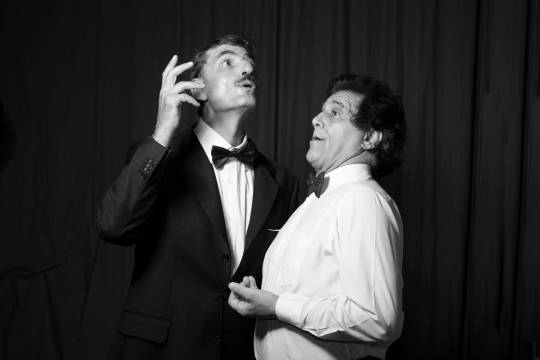
Visualizza su WordPress
0 notes
Text
Tiziana Bonanno commissario femminile di “Noi di Centro-Mastella” a Palermo
Tiziana Bonanno commissario femminile di “Noi di Centro-Mastella” a Palermo
Read More
Tiziana Bonanno è stata nominata commissario provinciale femminile di Palermo per “Noi di Centro – Mastella”. La nomina è stata ufficializzata dal segretario regionale del movimento, Giovanni Di Trapani. La […]
The post Tiziana Bonanno commissario femminile di “Noi di Centro-Mastella” a Palermo appeared first on BlogSicilia – Ultime notizie dalla Sicilia.
Palermo, Politica, Noi di…

View On WordPress
0 notes
Photo
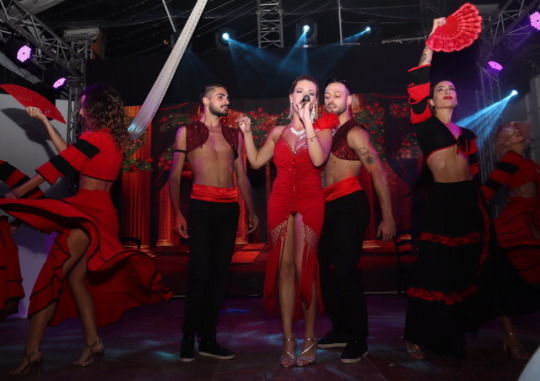
Domina Coral Bay - Sharm: tutti i numeri del successo delle feste di fine 2021
Il periodo delle feste di fine anno al Domina Coral Bay, immenso paradiso pieno di scenari da sogno, relax e intrattenimento internazionale sul Mar Rosso, è da sempre un periodo magico. Il 2021 / 2022, nonostante i problemi causati dal Covid-19, non ha fatto eccezione. Se in tutta Europa il turismo soffre, finalmente anche i turisti italiani sono tornati a poter frequentare Domina Coral Bay. Il corridoio turistico Covid Free tra Italia e Mar Rosso resta infatti aperto (come conferma Viaggiare Sicuri, il sito ufficiale del Ministero degli Esteri dedicato alla Salute in Viaggio a questo link: http://www.viaggiaresicuri.it/approfondimento/saluteinviaggio/coronavirus/Corridoi-Turistici).
I numeri decisamente positivi delle feste di fine anno al Domina Coral Bay parlano chiaro: 21 voli charter tra Italia e Sharm El Sheikh; 103.950 pasti serviti tra colazione, pranzo e cena; 3.154 cene servite in contemporanea la sera di Capodanno nei sette ristoranti; 10 spettacoli all'Arena Theatre con circa 9.000 presenze; 15 dinner show a cui hanno partecipato godendosi cena e spettacolo oltre 2.600 persone; 14 spettacoli al Mosaique Cafè; 60 mini show diurni; 2 spettacoli nel deserto con 800 persone; 3 countdown per i fusi orari (la mezzanotte di Domina, Egitto e Italia); 8 palchi diversi, ognuno con il suo impianto audio e luci; 6 beach party con oltre 5.700 persone; 22 artisti sui diversi palchi; 2 corpi di ballo Internazionali; 9 cantanti; 4 dj; 8 special guest; 2 tornei di beach volley con atleti professionisti russi e ucraini...
Tra gli spettacoli più emozionanti, ecco il dinner show di Capodanno 2022 al The Beach (nella foto), uno spazio creato e gestito da professionisti italiani della ristorazione e dell'intrattenimento. Tra gli artisti sul palco, un celebre volto tv come Giovanni Ciacci, che tra l'altro sta collaborando anche con la tv di stato egiziana. Al party di Capodanno del The Beach hanno partecipato, tra gli altri, anche Fabio Brucini, Console Onorario a Sharm e l'attrice Cecilia Caprotti con il marito Gianluca Nobili, professionista che si occupa di eventi. Presenti anche la cantante Roberta Bonanno (Amici, Tu Si Que Vales), l'attrrice Guenda Gloria con il regista Mirko Gangitano, la giornalista Mediaset Claudia Peroni, la cantante Eliza G, Urban Pop Diva molto nota in Brasile e Saintpaul, dj dalla lunga esperienza.
Le feste di fine anno sono però già lontane, soprattutto per chi è tornato allo stress del lavoro e del tran tran quotidiano e sogna un break al caldo tra fine inverno e primavera 2022... Sul sito di Domina (www.domina.it) sono disponibili offerte per scegliere al meglio tra le infinite opzioni disponibili per un soggiorno da sogno in uno degli 8 hotel 5 stelle di questa immensa struttura.
Cos'è Domina Coral Bay - Sharm El Sheikh
Situato a Sharm el Sheikh, una delle destinazioni più affascinanti del Mar Rosso, Domina Coral Bay Hotel, Resort, Spa & Casino, sorge su un'area d'incomparabile bellezza, dove il deserto roccioso del Sinai si tuffa tra i coralli e le acque cristalline dello Sheikh Coast. Il Resort, che si propone in sette diverse formule, è in grado di accogliere fino a 4.500 ospiti e di soddisfare qualsiasi aspettativa, disponendo di tutti gli ingredienti per creare un evento indimenticabile. Con 1.8 km di spiaggia e una scelta di ristoranti infinita (3 ristoranti à la carte, 4 ristoranti a buffet, 4 beach restaurant), Domina Coral Bay Hotel, Resort, Spa & Casino contiene al proprio interno tutto il necessario per offrire una vacanza esclusiva.
Il sito ufficiale di Domina Coral Bay con tante offerte per una fine inverno / primavera 2022 al caldo
https://www.domina.it/hotel/domina-coral-bay/
3 notes
·
View notes
Photo

"Small black eyes,
if you look,
let houses and cities fall down.[...]"
Giovanni Meli, The eyes [According to the tradition, Meli is referring to Lucia Migliaccio's beautiful black eyes].
Donna Lucia Maria was born in Siracusa on January 18th 1770. She was the daughter of Don Vincenzo Migliaccio e Bonanno, of the Princes of Baucina and 8th Duke of Floridia and San Donato, and Spanish descendant Dorotea Borgia e Rau, of the Marquises of Casale. At 6, following her father's death, and as her parents' only living child (her brother Ignazio had already died at just 5 years old), she inherited the Duchy of Floridia.
On April 19th 1781, only 11 years old, the little Duchess married in Palermo the 25 years old Benedetto Maria Grifeo del Bosco (he was born on November 17th 1755), Duke of Ciminna and firstborn of Gerolamo Maria 7th Prince of Partanna. The Grifeo was an incredibly old and noble Sicilian family whose ancestors received their titular fief during the rulership of the Great Count Ruggero, in 1091, and the baronage in 1139, during the reign of his son, King Ruggero II of Sicily. In 1802 the Prince Gerolamo Maria died, and Benedetto became the 8th Prince of Partanna, making Lucia the Princess consort.
Benedetto also inherited the role of Deputy of the Kingdom, and on November 4th of the same year, he was awarded by King Ferdinando IV of Naples and III of Sicily with the knighthood of the Insigne Real Ordine di San Gennaro. The Prince of Partanna also served as Gentleman of the Bedchamber and State Councillor, giving his wife the chance to frequent Palermo high society and even the Royal court during King Ferdinando's long periods spent in Sicily. Lucia was praised for her intelligence, artistic skills and beauty (in particular her black eyes).
The Princess bore her husband nine children, five of whom survived infancy: Vincenzo (future 9th Prince of Partanna), Giuseppe, Leopoldo, Luigi. Marianna, the only daughter, is considered by some people the illegitimate daughter of King Ferdinando, since she was born in 1808, when Lucia was already the sovereign's lover, and given the deep affection Ferdinando always exhibited for Marianna.
Since 1806, the King and his court, had been forced to move to Palermo to escape the French army which had invaded the peninsular part of the Bourbonic kingdom and would establish the Kingdom of Naples under the rulership of Napoleon's brother-in-law, Joachim Murat.
In the meantime, Lucia's beauty (not ruined in the least by the numerous pregnancies) gave soon rise to a lot of gossip, and her name was linked to other gentlemen's ones, like the Neapolitan Lucio Caracciolo, Duke of Roccoromana, renowned womanizer. The existence of a relationship between the two is (according to some) supported by the fact that, once married to the King, she asked her husband to pardon the Duke, as Caracciolo had been loyal to Murat and even took part to the Russian Campaign. Despite his traitorous track records, in fact, the Duke retained until the end his favoured position at the Bourbonic royal court.
On January 16th 1812, King Ferdinando, who since 1806 had been able to count on the help of the British army and, thanks to them, retain control of Sicily, was nonetheless forced by his protector Lord Bentinck to hand over his powers (on the basis of a fictitious illness) in favour of his son Francesco, who was appointed Regent of the Kingdom. The same year, on March 28th, Don Benedetto Grifeo died at 56, leaving Lucia free to pursue her relationship with Ferdinando with fewer restrictions especially since the King's rightful wife, Maria Carolina, having lost any political influence and accused to have plotted against the British allies was forced to leave Sicily to never return.
On July 1814 Ferdinando pronounced himself recovered and took back control of the government. As he intended to keep the peace in the Sicilian territory, he declared he would maintain (at least officially) the Sicilian Constitution which had been promulgated in 1812, under the regency of his son. Two months later, on September 8th, Maria Carolina would be found dead in her chamber in Hetzendorf castle, in Vienna.
Now free, Ferdinando asked Lucia to marry him, and she was too happy to accept. The couple married in Palermo's Palatine Chapel, in a secret ceremony officiated by Friar Salvatore Maria Caccamo, the King's confessor and chaplain, and with Vincenzo and Carlo De Falco as only witnesses, on November 27th, barely 80 days after Maria Carolina's death. Lucia was 44, while her husband was 63.
Ferdinando's son and heir, Francesco had tried to dissuade his father on the ground of the many rumours going around Lucia's marital fidelity, to which the old King supposedly retorted: "Penza ‘a mammeta, guagliò, penza ’a mammeta!" ("Think about your mom, kid, think about your mom!"), alluding to the deceased Queen's affairs. The only thing that cheered Francesco was that, as a morganatic union, no child born from that marriage could make any claim on the Throne.
As soon as people got wind of the secret wedding ceremony, the couple was critiqued as their marriage (which moreover had happened too soon) was seen as an attempt made by two cheaters who, now both widowed, had tried to patch things up.
Unlike her illustrious and strong willed predecessor, Lucia proved to be discreet, moderate and accommodating, staying away from political affairs and intrigues. Ferdinando was particularly satisfied with his new wife, bragging that he had now a wife that let him do whatever he wanted, and a Minister that gave him little to do.
Even though Napoleon had already been (apparently) defeated in Leipzig and sent to exile on the island of Elba, Murat was still ruling in the Neapolitan territory, making for Ferdinando impossible to return, even with the British support. It would be only one year later, that the former Emperor's brother-in-law would be defeated in the battle of Tolentino, at the beginning of May. Thanks to the agreements made during the Congress of Vienna, and especially since the Treaty of Casalanza signed on May 20th 1814, Ferdinando was given back almost his whole former territories. In this same occasion, although, he lost Malta (which had been part of the Kingdom of Sicily since XIth century) which became a British protectorate, and the Stato of the Presidi (which included the Island of Elba), donated to the Gran Duchy of Tuscany.
In 1815 Ferdinando returned to Naples with Lucia by his side, while his son Francesco was left in Sicily to act as Lieutenant of the Kingdom. In Naples Lucia was warmly welcomed and was showed the due respect as a real Queen. Moreover, her beauty also helped attracting many artists' attention.
That same year Lucia received from her husband a special gift. The King in fact bought for his wife the vaste estate located in the Vomero quarter in Naples, which once had belonged to the Prince Giuseppe Caracciolo of Torella. As a tribute of Lucia's title of Duchess of Floridia, the manor was renamed la Floridiana, while the park annexed was called Parco Grifeo (deriving from another of her titles). The property was enriched in 1817 with the purchase of other surroundings plots, while between 1817-19 architect Antonio Niccolini cured the reconstruction in Neoclassical style of the pre-existing villa and the re-configuration of the park as an English landscape garden. Friedrich Dehnhardt, the then Director of the Botanical Garden of Naples, oversaw the bedding of more than 150 species of plants, which went to enrich the already beautiful park. By 1819, the estate comprehended two villas (Villa Floridia – later Floridiana - and Villa Lucia), a bridge which connected the two habitations, an open-air theatre called "della Verzura", a Neoclassical circular temple, fake ruins, fountains, statues and greenhouses. La Floridiana was to be Lucia and Ferdinando's haven of tranquillity for the next few years.
On December 8th 1816 Naples and Sicily were merged into a single state, which was named Kingdom of the Two Sicilies (with Naples as its Capital, much to Palermo and the Sicilian in general's chagrin), and Ferdinando became the first sovereign of the now unified reign, and would be known as Ferdinando I of the Two Sicilies. The heir Francesco resumed his role as Regent and Lucia as Royal spouse.
In his last years, Ferdinando had to deal with revolutionary movements in both Sicily and Naples. He was forced to sign the Constitution and once more to entrust the executive powers to Francesco. It was only in 1821, with the help of the Austrian army which occupied Naples (the revolution in Sicily had already been stopped), the King managed to restore the Bourbonic absolute monarchy and the Constitution was withdrawn. Ferdinando died four years later, on January 4th 1825, after 57 years of reign. He was 73, and his marriage with Lucia had lasted 11 years. Lucia spent her remaining time in her Floridiana. She died one year and three months later, on April 26th 1826. She was buried in the Church of San Ferdinando, in Naples, separated from her husband, who lies in the Church of Santa Chiara, burial place of the Bourbonic Kings of Naples.
Her son Vincenzo inherited his mother's titles and fiefs, while La Floridiana was divided in 1827 by the deceased Duchess' children into three distinct parts. Villa Lucia was firstly owned by her son Luigi Grifeo, Minister to the Grand Duchy of Tuscany, and then passed from hand to hand. The villa is currently a private residence whose property is divided into three wealth Neapolitan families. Villa Floridiana and the park, on the other hand, underwent many alterations at the hands of the heirs, until in 1919 they were sold to the Italian State and became the Museum of Ceramic.
#women#history#women in history#history of women#historical women#lucia migliaccio#ferdinando i of the two sicilies#modern sicily#myedit#historyedit#people of sicily#women of sicily#house of bourbon of the two sicilies#siracusa#province of siracusa#Palermo#province of palermo
24 notes
·
View notes
Text
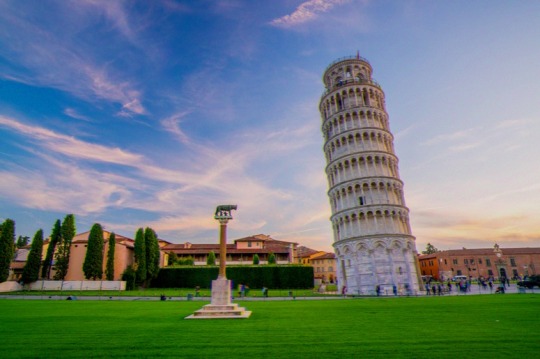
✔️ L'attrazione principale della città di Pisa - la Torre Pendente di Pisa - acquisì la sua strana pendenza all'inizio della costruzione nel 1173. L'autore del progetto è stato l'architetto italiano Bonanno Pisano.
✔️ I tentativi furono ripresi nel 1272 sotto la guida di un nuovo architetto - Giovanni di Simone. Tuttavia, non ha avuto successo di nuovo. La torre fu completata solo nella seconda metà del XIV secolo.
✔️ La Torre Pendente di Pisa combina diversi stili architettonici: bizantino, romanico e arabo. Era costruito in pietra, ma decorato con marmo di Carrara.
7 notes
·
View notes
Text
Did the Mafia hit JFK?
56 years later, no one is still certain that Lee Harvey Oswald acted alone in assassinating John F. Kennedy, USA’s 35th president. Mostly because of the Cosa Nostra’s entanglement with the matter.
The Cosa Nostra believed that JFK was indebted to them, after helping him win the election that got him to the White House. As president, JFK appointed his younger brother Robert Kennedy as Attorney General- and he was ardently resolute upon destroying the underworld.
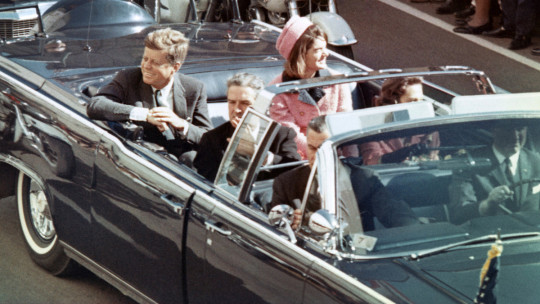
Taking on investigations of organized crime with unorthodox savvy and street smarts, paired with J. Edgar Hoover, the Director of the Federal Bureau of Investigation; Bobby (affectionately called Booby by Jimmy Hoffa) Kennedy shook the nests of the untouchable Cosa Nostra, with his progress in obtaining intelligence skyrocketing to highly menacing threats.
One of Bobby’s most notorious catches was Carlos Marcello, the Mob boss of New Orleans. He found out that the mafioso never applied for a citizenship, and soon he was on a plane back to Guatemala City.
“You see, the Cosa Nostra. The other day they made me become frightened. They know our business better than us. They know the heads of the families, the capodecina, the FBI does. Therefore, that’s why, the other day, I say be careful before you open your mouth. Because sometime, somebody could be a spy and you might think he is an amico nostro.”
- Steffano Magaddino, Buffalo borgata boss; Joe Bonanno’s cousin.
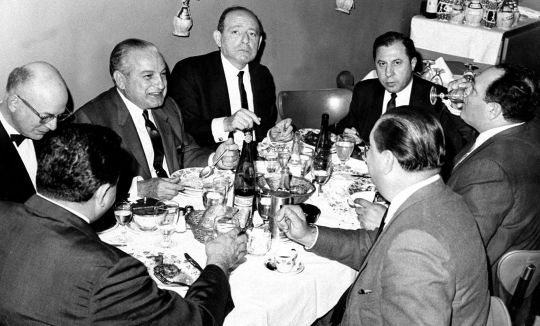
Edward Becker, public relations officer in the underworld, once quoted that Marcello claimed to get his revenge on Bobby Kennedy for deporting him. Aside from that, the attorney general was already getting all up in other important figures’ nerves, and many were out to hit him even if he was an honest official, who, technically, in mafia principles, was immune to being hit.
“The dog will keep biting you if you cut off its tail, but that if the dog’s head is cut off, the dog would die.”
- Carlos Marcello in Becker’s paraphrasing, putting JFK as the dog and Bobby being the tail.
Marcello allegedly told Becker that getting rid of JFK would certainly eliminate Bobby from the picture, which posed a more secure outcome than getting rid of Bobby only- for JFK, he said, would come at them with the “Army and the Marines.”
Aside from Carlos Marcello, the Senate Select Committee identified Santo Trafficante Jr., boss of Tampa and the American mafioso of Cuba as a personage most likely to have been behind JFK’s assassination.
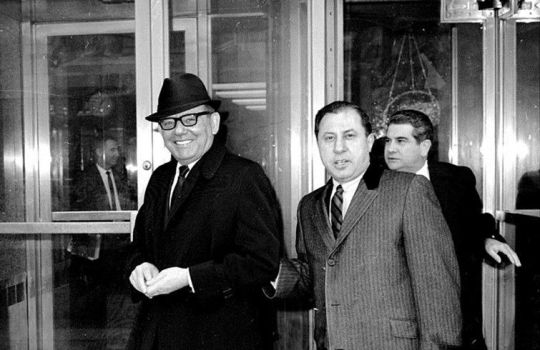
Santo Trafficante Jr. and his lawyer, Frank Ragano
Santo Trafficante Jr. stayed in Cuba despite Fidel Castro’s reign, thinking he could keep the casino doors open by bribing the new government. However, Castro wasn’t at all welcoming to his businesses, and even threatened to execute him.
Taking advantage of this steam, the Central Intelligence Agency got Trafficante in on a plot to kill Castro. The poison plot failed and no one knows what happened to the $150 000 CIA money for the operation. Trafficante testified for the JFK assassination, but he professed himself clueless about this kill-Castro scheme. Sam Giancana was also going to be interrogated, as a name in the scheme, but he was killed prior to this appointment, as well as John Roselli, who vanished after meeting up with Trafficante. Giancana was shot through the mouth, and Roselli was mutilated- in mafia language, that was because they broke omerta, (the code of silence) or were going to.
Almost two decades after the investigation on the assassination was pulled to a dead end, Frank Ragano, Trafficante, Marcello and Hoffa’s lawyer, stepped up with long-hidden information about the underworld’s possible influence on the matter with his autobiography, Mob Lawyer.
“That rat bastard, son of a bitch. We broke our balls for him and gave him the election and he gets his brother to hound us to death.”
- Sam Giancana referring to John F. Kennedy, as Ragano heard him at a dinner.
Ragano claimed that he heard Giancana’s unloving remarks of the Kennedys, as well as Trafficante’s rants about the president keeping Castro in his seat. The mob lawyer also stated that Jimmy Hoffa ordered him to convey an urgent order to Trafficante and Marcello. To “kill that son of a bitch John Kennedy.”
Although the lawyer thought it was an annoyed joke, he told the two bosses the demand. On the very day that JFK was shot, Hoffa called Ragano and asked if he heard “the good news”.
Jimmy Hoffa disappeared in 1975, twelve years after that moment, after having Ragano by his legal team throughout Bobby’s chase for him. This was four years after being commuted by President Richard M. Nixon on his thirteen-year prison term.
Trafficante once told Ragano that Hoffa was alarming the Cosa Nostra by declaring that he was going to write a book revealing all of what he knew about the Mob.
He was hit by Anthony Provenzano, a New Jersey teamsters’ union head in the same year of his disappearance.

Jimmy Hoffa
Sometime during March of 1987, twenty-four years after JFK’s assassination, a sick Trafficante requested for Ragano to drive him along Bayshore Boulevard, Tampa. The mob boss had kidneys under dialysis and was about to get his second open-heart surgery. He vented to the lawyer about Marcello and what “they did” to Giovanni, his nickname for John F. Kennedy.
“Goddamn Bobby, I think Carlos fucked up getting rid of Giovanni. Maybe it should have been Bobby. We shouldn’t have killed Giovanni. We should have killed Bobby.”
- seventy-two-year-old Santo Trafficante Jr., as Ragano narrated.
In less than four years, Bobby was able to indict 116 made men in the underworld, including Jimmy Hoffa. The ex-attorney general was struck by a bullet during a presidential election campaign in Los Angeles, one that he was undoubtedly going to win.
After JFK’s death, the government ceased down on their chase, especially after Robert Kennedy’s resignation. The attorney general after him, Ramsey Clark, got rid of the unconstitutional bugs that provided them intelligence from the underworld. With all this fire extinguished, the bosses kicked back at ease again.
JFK’s death was a colossal victory for the underworld, whether they were behind it or not.
#mafia#underworld#Organized Crime#Mafia Boss#Cosa Nostra#Kennedy#John F. Kennedy#JFK Assassination#Robert Kennedy#FBI#CIA#Fidel Castro#Carlos Marcello#Frank Ragano#American Mob#American Mafia#conspiracy#conspiracy theory#USA#assassination#mafia assassination#Santo Trafficante Jr#Jimmy Hoffa#JFK#JFK death#Lee Harvey Oswald#JFK and the mafia
29 notes
·
View notes
Text
Tower of Pisa (Italy)
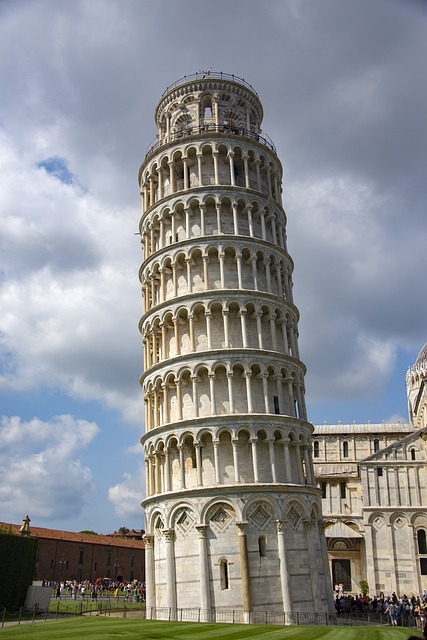
Pisa is a beautiful little Italian city crossed by the Arno River. In the center of this city, right in the old town, is the representative Plaza de los Milagros, a chamber that brings together four of the most important religious monuments built in the Middle Ages that are: the Baptistery (site intended for baptisms), the cemetery of the city, the Cathedral and the emblematic Tower.
History and properties of the Tower of Pisa
The Tower of PisaIf we stop to think of the most important monuments, recognizable and visited in the world, it is impossible that the grandiose and symbolic Tower does not cross our minds, one of the wonderful works of architecture that for the most attractive, has a touch that makes it much more special and is that the tower is crooked and seems about to fall.
During all these years, it has been commented that the author of this work was the architect Bonanno Pisano, who would begin the construction of the first floor in the XII century, exactly on August 9, 1173. But it is not yet known for certain who was actually the architect who was tasked with the construction of this great work.
It was built with the idea of being a bell tower to accompany the cathedral, this had to be completely vertical like all normal towers, but things did not go as planned. Five years it took to build the first three floors, and when they started to build the fourth floor something started to go wrong, and the tower began to tilt north.
Almost a hundred years later the architect Giovanni di Simone dares to resume the building by building vertically the four floors that were missing but the consequences were catastrophic. Keep bowing and they decide to stop the play again. In 1298 Tommaso Pisano decided to continue the construction of the bell tower leaving the tower fully ready for its opening in 1372.
Image of Denis Streltsov in Pixabay
1 note
·
View note
Text

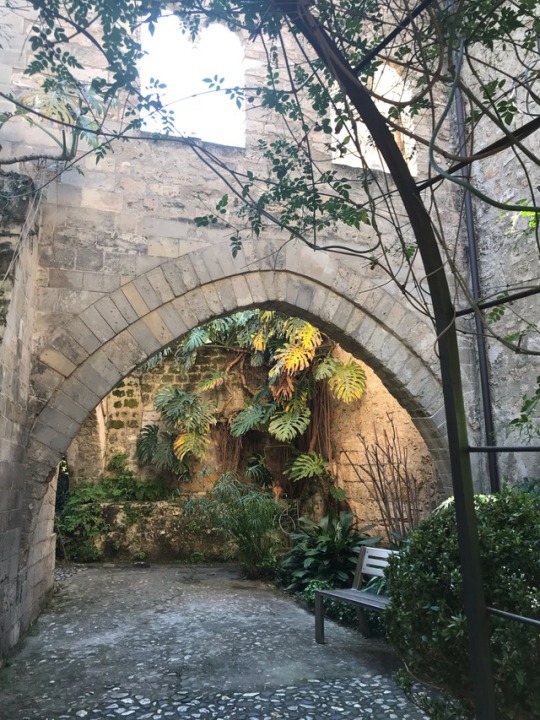

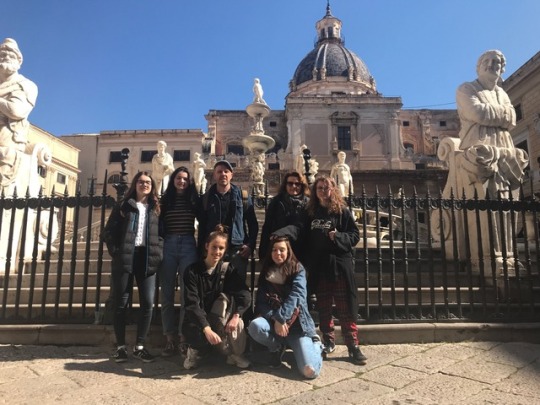
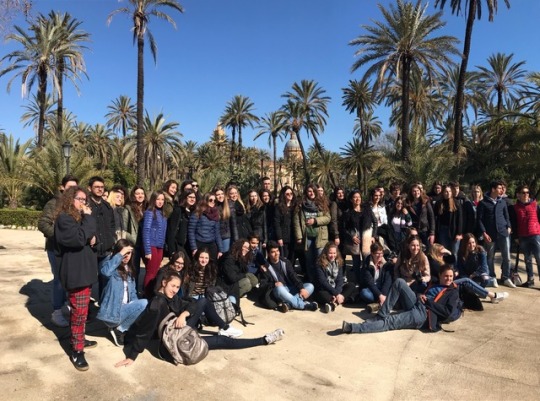


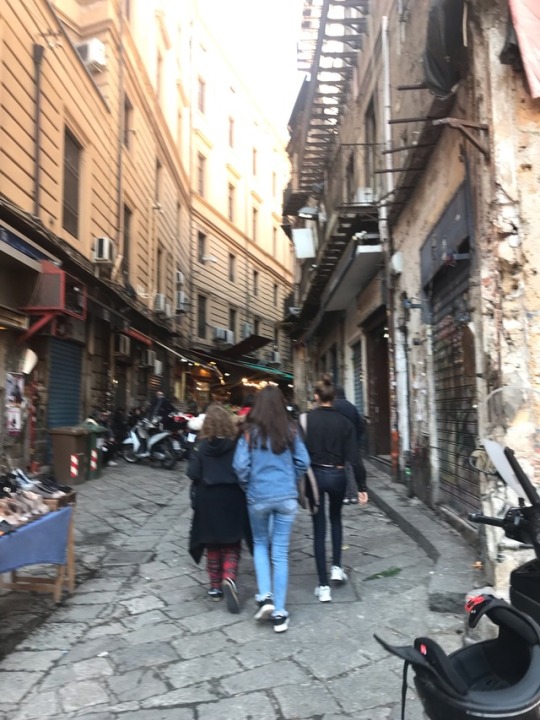
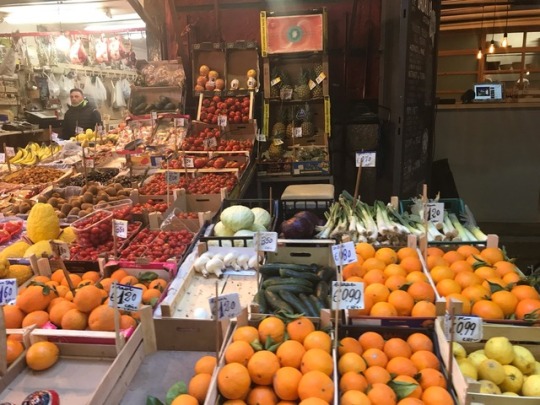
Here are some pics we took in Palermo. We spent a very nice time there. Guided tour in the morning, where we visited outstanding buildings and sites, such as the church is San Giovanni degli Eremiti, Villa Bonanno, Palazzo dei Normanni, as well as The Cathedral. In the afternoon we saw a performance of the Opera feo Pupi (marionettes).

1 note
·
View note
Text
Pavilion Locust Valley, “Generazione Marginali Attivi Ovunque – Active Marginal Generation Everywhere”
Presentazione di Sandro Bongiani
Salerno, 4 aprile 2024
Dopo la mostra del progetto internazionale dal titolo “LiberaMente / Is Contemporary Art a Prison?” a cura di Sandro Bongiani, presentato ufficialmente il 2 ottobre 2023 presso la Galleria Sandro Bongiani Vrspace ecco un altro importante appuntamento sul tema dello straniero ovunque, ovvero,“Generazione Marginali Attivi Ovunque, in cui viene segnalata la condizione di diverse generazioni di artisti marginali attivi che in modo originale e solitario hanno continuato a lavorare nell’isolamento collettivo, alcuni anche per diversi decenni non curandosi minimamente del mercato e del sistema ufficiale dell’arte producendo nel tempo opere per certi versi non conformi ai dettami imposti dal mercato e proseguendo in un cosciente viaggio isolato e personale. Sono presenti a questo evento collettivo, ognuno con una propria personale artisti importanti come: Ray Johnson, Guglielmo Achille Cavellini, Shozo Shimamoto, Clemente Padin, Lamberto Pignotti, Giovanni Fontana, Paolo Scirpa, Marcello Diotallevi, Giuliano Mauri, Giulia Napoleone, Pietro Lista, Paolo Gubinelli, Giovanni Leto, Coco Gordon, Anna Boschi, John M. Bennett, Nicolò D’Alessandro, Enzo Patti, Serse Luigetti, Franco Panella, Ryosuke Cohen, Ernesto Terlizzi, Mauro Magni, Andrea Bonanno, Gabi Minedi, Raffaele Boemio, Ruggero Maggi e Reid Wood.
L’espressione “Stranieri Ovunque” scelto da questa 60. Biennale Internazionale di Venezia 2024 ci vuole far intendere che ovunque si vada e ovunque ci si trovi l’artista nel profondo sarà sempre uno straniero. Non viene mai per niente sottolineata la condizione di disagio dell’artista poco compreso dal sistema dell’arte. Questa è l’altra faccia della medaglia per niente indagata a questa 60. Biennale di Venezia. Inoltre, ci preme sottolineare al curatore Adriano Pedrosa che aveva preso in prestito il titolo di questa biennale da un’opera «Foreigners Everywhere» (2005) del collettivo italo-britannico Claire Fontaine, che in un tempo non recente ma già remoto rispetto l’opera di Claire Fontaine vi è stato un autentico “stranger” come il siciliano Ignazio Corsaro vissuto per diverso tempo a Napoli fino alla sua scomparsa avvenuta nel 2013 che dal 1986 in poi ha indagato insistentemente la condizione dell’artista “stranger” producendo a proprie spese senza alcun finanziamento pubblico da parte delle istituzioni un insolito bollettino semestrale edito a Napoli dal titolo “Lo Straniero”, in cui metteva in evidenza l’isolamento dell’artista contemporaneo di fronte a un sistema arrogante che costringe e umilia. Infatti, nell’anno III numero 5 del semestrale Lo Straniero del 1988 scriveva: “Prima o poi anche tu sbatterai contro “lo straniero” perché il vero straniero non è un estraneo ma te stesso”. Nello stesso numero in una lettera/confessione il qui presente, immaginando di essere Caravaggio, (chi più di lui può essere considerato uno straniero), rispondeva: Caro Ignazio, approfitto di questa occasione per parlare di un necessario “armistizio” tra chi si contende l’arte, da una parte l’artista, che sceglie questa professione perché spera di sfuggire alla morsa alienata della vita a vedere il mondo a modo suo alla ricerca della libertà. Dall’altro i mercanti, gli speculatori e i profeti dell’ultima ora che vedono nell’attività creativa lo strumento che fa leva sulle ambizioni dell’uomo: ricchezza, potere, successo. Un armistizio implicherebbe un riposo dell’arte, gli artisti, finalmente nella quiete dei loro studi potrebbero dedicarsi con passione e pazienza alle loro ricerche inutili, senza preoccupazioni, come uomini saggi e felici piuttosto che cambiavalute angosciati. ”Da diverso tempo abbiamo deciso di dare la giusta attenzione a generazioni di artisti del panorama contemporaneo; in particolare alle generazioni nate tra gli anni 20’ e gli anni 70’ non pienamente considerati da parte della critica e dal sistema dell’arte spesso confuso e arrogante che preferisce proporre insistentemente proposte deboli, valorizzando volutamente artisti a servizio del potere culturale, come in questa Biennale di quest’anno incentrata sull’emigrazione intesa come osservatorio privilegiato del presente con una decisa e massiccia presenza a Venezia di artisti provenienti dal sud del mondo di matrice indigena, ovvero artisti provenienti da comunità o aree geografiche considerate marginali. Tutto ciò ci appare un deludente stratagemma per buttare fumo negli occhi e nascondere di fatto i veri problemi che da diverso tempo agitano le coscienze e le proposte libere relegate, purtroppo, ai margini dal sistema ufficiale dell’arte, di artisti volutamente in controtendenza rispetto alle “inscenate” imposte dal sistema culturale planetario dell’arte, presenze già da tempo trascurate e rimaste in ombra rispetto le dinamiche di mercato e dagli approcci sensazionalistici che caratterizzano l’arte di oggi. Ad un tema generico scelto da questa biennale abbiamo preferito segnalare la condizione difficile e marginale attiva di 28 artisti di diverse generazioni e latitudini del mondo costretti a vivere da “straniero sempre”, non semplicemente nel senso geografico del termine ma soprattutto umano e esistenziale.
Ecco una sorta di convinta rilettura non visibile quest’anno a Venezia ma presente per l’occorrenza in un padiglione del tutto virtuale, con un’area immaginaria di 28 sale presso il Pavilion Locust Valley in cui sono stati coinvolti 28 artisti in altrettanti mostre personali in un lucido e suggestivo percorso, ognuno con la propria specifica personalità e intensità creativa per una condivisione globale via web a 360 gradi in tutto il mondo a basso contenuto di emissioni CO2.
0 notes
Text
Frijda “No, non ti conoscevo”
Fuori il nuovo singolo della band catanese, estratto dal nuovo album Scacco matto
In radio e già disponibile in tutti gli store digitali “No, non ti conoscevo” il nuovo singolo dei Frijda, anteprima del- loro primo album Scacco Matto. I Frijda sono una delle band più interessanti della scena rock italiana, prodotti da Luca Venturi e Giovanni Grasso, per On the set con distribuzione Artist first. Il singolo è stato registrato e mixato a Milano al Metropolis Studio da Alessandro Marcantoni ed al NuevArte studio di Misterbianco (CT) da Carlo Longo, arrangiato da Franco Muggeo e masterizzato Claudio Giussani presso l’Energy Mastering di Milano. Il videoclip, diretto da Filippo Arlotta, è stato girato a Catania al Lido Le Palme.
Videoclip: https://www.youtube.com/watch?v=U4X4spwJm4w
Scritto da Giovanni Grasso, Giancarlo Sciacca (Thor dei Frijda) e Alfio Santonocito, il brano ci proietta verso una calda estate fatta di “risvegli”.
Frijda: -“No, non ti conoscevo” è una power ballad che ci “schianta” verso un’attrazione carnale che toglie il fiato all’ anima. Quando una donna sconosciuta diventa essenza di un peccato, dopo averlo toccato con mano, non consente più alcuna via di salvezza-
Biografia:
I Frijda nascono a Catania da un’idea del cantante Giancarlo Sciacca (alias “Thor”), che dopo esperienze in altre cover band rock sentì il bisogno di poter fare della musica propria per poter soddisfare la sua voglia di esprimersi e dare pace al suo animo irrequieto. Dopo un primo periodo di cambiamenti, la Band giunge alla formazione definitiva composta da Thor alla voce, Gaetano Giuttari e Luke Anthony alle chitarre, Domenico Cottone al basso ed Edoardo Bonanno alla batteria. Il genere che si professano di suonare è il “Rock”, un rock che ha le sue fonti di ispirazione nelle band storiche statunitensi e britanniche che hanno colpito la loro adolescenza, adattato all’evolversi del tempo e alle concezioni musicali dei nostri giorni e del nostro paese. Il nome “Frijda” non è altro che un omaggio al pensiero artistico della pittrice messicana Frida Kahlo, dalla quale Giancarlo rimase molto colpito durane gli studi universitari. In questa piccola donna egli vide un esempio di forza di vivere sovrumana nonostante le difficoltà della propria esistenza, una forza che è evidente nelle sue opere che non dipingono sogni, ma realtà e della sua celebre frase, “Pies para què los quiero si tengo alas para volar?” (A che mi servono i piedi se ho le ali per volare?), ne fece il motto della propria band. Sin da subito la Band ha iniziato un percorso live molto intenso tra locali, piazze e concorsi ottenendo sempre un grande consenso grazie al sound accattivante e al carisma del proprio leader. I Frijda hanno aperto anche concerti di artisti del calibro di Franco Battiato, Lucio Dalla e Mario Venuti.
Nel 2018 hanno pubblicato il loro primo singolo “Mentre muori di piacere”, e nel 2020 il loro secondo singolo “Lo dedico a te” con anteprima su “TgCom”. Recentemente, il 25 Marzo, in occasione delle “Giornate Rapisardiane”, una commissione di letterari ha scelto un brano dei Frijda, Impura poesia, corredato dal video in stile ottocentesco, girato da Simona Brance’, per rappresentare in musica la poetica del “Vate etneo”, ovvero il grande poeta catanese Mario Rapisardi. La Band ha ricevuto importanti recensioni su alcuni dei più grandi portali dedicati all’arte non soltanto italiani, ma anche europei, specialmente Francia e Spagna, tra tutti questi possiamo citare “Arts Direct”, “Lux Cultural”, “Tutto RocK”, “Ars Magistris”, e “Ok Arte”, ottenendo sempre grandi consensi. I video ufficiali sono pubblicati sul canale “Frijda Official Tube” della piattaforma Youtube. Il loro primo album “SCACCO MATTO” è prodotto da Luca Venturi per la “On The Set “, di Milano.
https://www.facebook.com/FrijdaOfficial
https://www.instagram.com/frijdaofficial/
Frijda Official Tube” https://www.youtube.com/channel/UCZgy5PUa53F54wjzOmvMfng
source https://www.ilmonito.it/frijda-no-non-ti-conoscevo/
0 notes
Text
WINNY E GIO'
Giovanni Nicoletti e Vincenzo Bonanno in arte Winni e Giò, sono la coppia comica del momento, ricordano perfettamente la coppia Franco e Ciccio.
Giovanni ha in lungo trascorso nelle commedie dialettali del basso Lazio, e si percepisce la sua padronanza del palcoscenico, e la sua mimica spontanea e fluida, che ricorda molto quella dell’artista palermitano.
Nel 1978 comincia la sua “avventura…
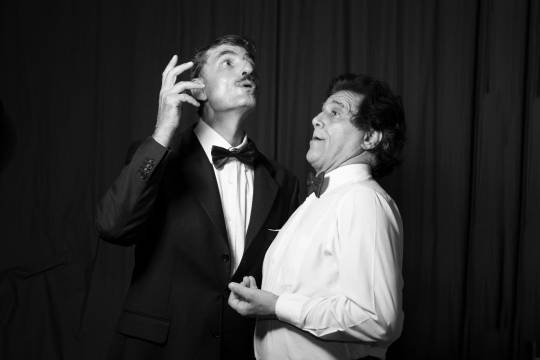
View On WordPress
0 notes
Text
Unknown Facts and History about Leaning Tower of Pisa
It was intended to build as a freestanding bell tower for the cathedral in Pisa
Tower construction began in the 12th century and was completed at the end of the 14th century.
Foundation credit for Pisa Tower goes to widow lady Donna Berta di Bernardo as the first stones used to form the base of the Tower were purchased with her money which she left to the Opera Campanilis petrarum Sancte Marie in 1172.
Gherardo di Gherardo, Bonanno Pisano, Giovanni Pisano, Giovanni di Simone are the architects and engineers who designed the leaning Tower of Pisa
Bonanno Pisano and Gherardo di Gherardo are the architects who constructed the first phase of Pisa Tower and the second phase of construction was continued by Giovanni Pisano and Giovanni di Simone. Tommaso Pisano finished the tower’s construction.
It is the third oldest building in the city's Piazza del Duomo after the cathedral and the Baptistery.
The original completed height of the Tower of Pisa is 60 meters but due to lean the height of the tower from the low side is 55.86 meters (183.27 feet) and 56.67 meters (185.93 feet) on the high side.
First, it began to lean in 1178 when construction on the 2nd floor had begun. The lean was caused by an inadequate foundation on the ground too soft on one side to properly support the structure's weight.
The Leaning Tower of Pisa is a circular shaped building with eight floors. There are 7 bells located on the eighth floor and each bell represents one note of the musical major scale.
Leaning Tower of Pisa has approximately 294 steps on the north side and 296 steps on the south side.
Along with the cathedral, cemetery and the baptistery, Leaning Tower of Pisa became a UNESCO World Heritage Site in 1987.
Due to Collapsed of Civic Tower of Pavia in 1989, the work of restoration was sped up for the Leaning Tower of Pisa. The risk of collapse was seen to be too much of a danger to the public and it was decided to make the leaning tower of Pisa more stronger and stable by removing dirt from the ground and fill it with mortar and cement. In 1990 before restoration work, Pisa Tower leaned as much as 5.5 degrees and it is thought that the restoration will keep the Leaning Tower of Pisa stand for the next 300 years.
From the year 1989 to 2000 The tower was closed to the public domain for restoration work and finally, from 2001 the tower has been opened again to the public.
The tower weighs about 14,500 tons. That's a lot of weight for a building who is leaning and to have to support when it has been leaning since it was built.
According to engineers in 2008, the Tower had stopped moving. This is the first time in the history of Pisa Tower that it has not been slowly leaning further to one side.
Galileo Galilei has performed the experiments to study the equations for a falling body from the top floor of this tower.
During World War II, it was used by Germans as an observation post and once the Allies saw how beautiful the tower was they refrained from destroying
0 notes
Photo

Domina Coral Bay (Sharm El Sheik): live music al The Beach e tanti VIP in libera uscita
Domina Coral Bay, splendido deluxe resort a a Sharm El Sheik, in Egitto, sul Mar Rosso non è solo semplicemente aperto in questo periodo difficile di pandemia globale. Oltre a sport, una location unica e servizi all'altezza della situazione, propone ai suoi ospiti show musicali di qualità assoluta come quelli di Matteo Borghi (nella foto, che, ad esempio, si esibisce il 3 febbraio 2021 al The Beach) e Roberta Bonanno.
Entrambi hanno deciso di passare il lockdown a Sharm, esibendosi più volte per la clientela russa, ucraina e kazaka che in questo periodo può frequentare il resort, visto che è sottoposta a meno restrizioni rispetto ai paesi europei.
Matteo Borghi in particolare poche settimane fa ha pubblicato "Adios", brano che racconta la fine di un amore, i colori e le sfumature del dolore, i silenzi profondi e le parole urlate di un addio. Racconta una storia d'amore vissuta oltre quella sofferenza che ha conosciuto la libertà, quella sofferenza che che vuole giudicare e non vuol essere giudicata, oltre giudizi e pregiudizi.
D'altra parte Domina Coral Bay, oggi come ieri, è poi spesso scelto da personaggi e vip anche per i loro impegni di lavoro o per semplici vacanze, visto la bellezza della location. Ad esempio, Vasco Rossi ha girato qui buona parte del moviecilp relativo al suo album "Buoni e Cattivi". Oltre al mitico Blasco, tra i protagonisti del Movieclip c'è anche la bella (e bravissima) attrice Andrea Lehotska.
Di casa al Domina Coraly Bay c'è poi Giovanni Ciacci, celebre stylist che per Il Capodanno 2020 è stato protagonista di due countdown, uno per la mezzanotte italiana e uno per quella egiziana davanti a 4.000 persone. Tra i personaggi televisivi spesso ospiti del Domina Coral Bay, ecco Maria Teresa Ruta, celeberrima presentatrice oggi tra i protagonisti del GF Vip, che qui ha una casa. Spesso al Domina arriva per rilassarsi e pure per pensare ai suoi futuri programmi tv Simona Ventura. Qui, qualche tempo fa, Simona è stata protagonista di una vacanza con tutta la sua famiglia (i genitori, i figli, Giovanni Terzi, Stefano Bettarini e Nicoletta Larini, etc).
Protagonista in console poi è spesso la dj Russa Irina Kant, guest recentemente al Club Pasha e al The Beach di Sharm el Sheikh. Anche lei è tra i fortunati che possiedono una casa al Domina Coral Bay ed unisce lavoro musica e relax.
https://www.dominacoralbay.com/
https://www.facebook.com/dominacoralbay.sharm.el.sheikh
https://www.instagram.com/dominacoralbay/
2 notes
·
View notes
Photo

Journey of the Three Kings (with original sin). Bonanno Pisano, tile of the portal of the cathedral of Pisa, 1180. “Magi, voi siete i santi più nostri, i pellegrini del cielo, gli eletti, l’anima eterna dell’uomo che cerca”. (David Maria Turoldo) “I magi non si misero in cammino perché avevano visto la stella ma videro la stella perché si erano messi in cammino”. (San Giovanni Crisostomo) "Magi, you are the saints most ours, the pilgrims of heaven, the chosen ones, the eternal soul of man who seeks." (David Maria Turoldo) "The Magi did not set out because they had seen the star but they saw the star because they set out." (Saint John Chrysostom) #dream #magi #threekings #remagi #losreyemagos #epifania #art#arte #allartiscontemporary #holy #holyart #artesacra #paint #witch #witchcraft #spirituality https://www.instagram.com/robertomastroianni1179/p/CYZGxlPpIy_/?utm_medium=tumblr
#dream#magi#threekings#remagi#losreyemagos#epifania#art#arte#allartiscontemporary#holy#holyart#artesacra#paint#witch#witchcraft#spirituality
0 notes